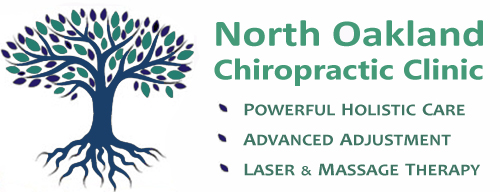5212 Claremont Avenue
Oakland, CA 94618• Mon. • Wed. • Fri. • 10am-6:30pm (by appt.) •
• Tues. 12pm-8pm & Thurs. 9am-4pm (by appt.) •Mid + Low Back
Mid-back pain has a number of sources…
The mid-back has muscle groups coming from the head, the neck, shoulder, ribs and low back. They all converge in the mid-back and any problems in those areas can manifest in the mid-back. The muscles that attach to the head, (splenius capitis, semispinalis capitis, terminate in between the shoulder blades), trapezius (which goes down to the lower thoracic region from the clavicle and goes up to the head), and latissimus dorsi (comes off the crest and lumbar spine fascia and goes laterally up the back to the back of the humerus over the lower part of the shoulder blade). (See illustration).
 You have the cervical musculature, semispinalis capitis being the largest, that come off the upper part of the cervical spine and go down to the area between the shoulder blades, and the other erector muscles of the cervical spine also come down and anchor in the upper thoracic spine in between the shoulder blades to move the head and neck. Then you have below those and conjoining with them the erector spinae muscles, collectively the iliocostalis, latissimus, and spinalis, that come off the crest of the ilium at the back of the sacrum and sweep all the way up the sides of the vertebrae, attaching to every rib a good four to six inches lateral to the spine up from the hip from the pelvis. Then deep to that, you have the joints of the ribs to the vertebrae with all these small muscles, the transversari, intercostals, rotatores, multifidi, that actually hold the joints together.
You have the cervical musculature, semispinalis capitis being the largest, that come off the upper part of the cervical spine and go down to the area between the shoulder blades, and the other erector muscles of the cervical spine also come down and anchor in the upper thoracic spine in between the shoulder blades to move the head and neck. Then you have below those and conjoining with them the erector spinae muscles, collectively the iliocostalis, latissimus, and spinalis, that come off the crest of the ilium at the back of the sacrum and sweep all the way up the sides of the vertebrae, attaching to every rib a good four to six inches lateral to the spine up from the hip from the pelvis. Then deep to that, you have the joints of the ribs to the vertebrae with all these small muscles, the transversari, intercostals, rotatores, multifidi, that actually hold the joints together.
Any one of those or all those muscle groups could be unhappy with life as they know it because of the postures and tasks that they are required to do.
 Any subluxation patterns that would be in place including those of the neck and head, the clavicle, the ribs in the region could produce deep, stabbing pain from a guarding mechanism that a misalignment pattern would provoke. Commonly, the mid-back pain is related to the pelvis – so the sacroiliac joints or sacral subluxation pattern would provoke rigid erector spinae muscles, the pain being consciously being felt by the patient where the tendon’s fibers insert on the rib cage, underneath the scapula or just next to the scapula. A lot of people call this shoulder pain. Where the patient is complaining of pain can be remote to the actual problem but related, because of the way the muscles are arranged. (See illustration)
Any subluxation patterns that would be in place including those of the neck and head, the clavicle, the ribs in the region could produce deep, stabbing pain from a guarding mechanism that a misalignment pattern would provoke. Commonly, the mid-back pain is related to the pelvis – so the sacroiliac joints or sacral subluxation pattern would provoke rigid erector spinae muscles, the pain being consciously being felt by the patient where the tendon’s fibers insert on the rib cage, underneath the scapula or just next to the scapula. A lot of people call this shoulder pain. Where the patient is complaining of pain can be remote to the actual problem but related, because of the way the muscles are arranged. (See illustration)
LOW BACK PAIN
Watch Dr. Ruch’s video, Ergonomics and Lifestyle Guide For Low Back Injuries, below.
Decompression Therapy

